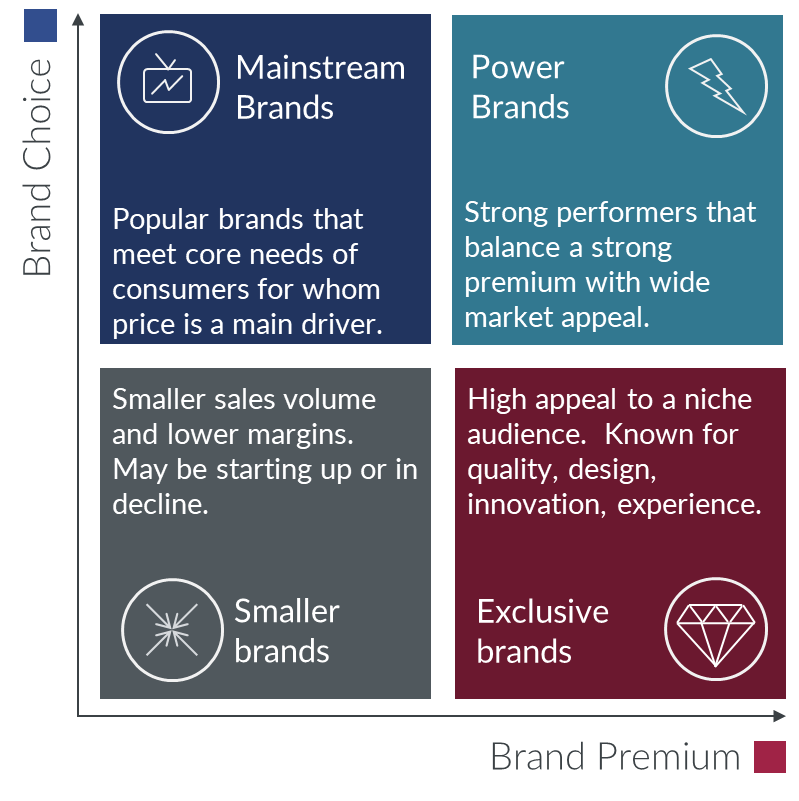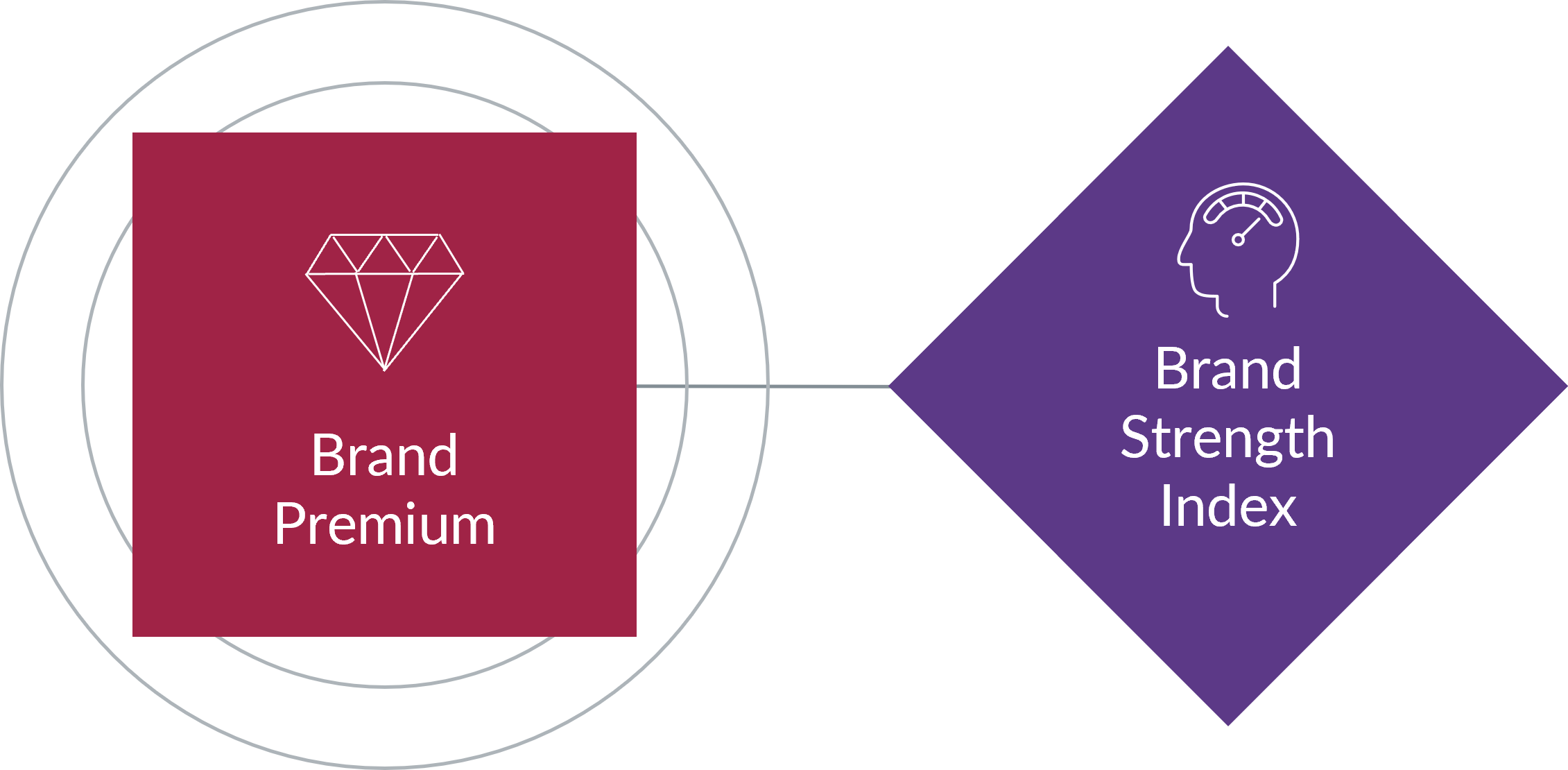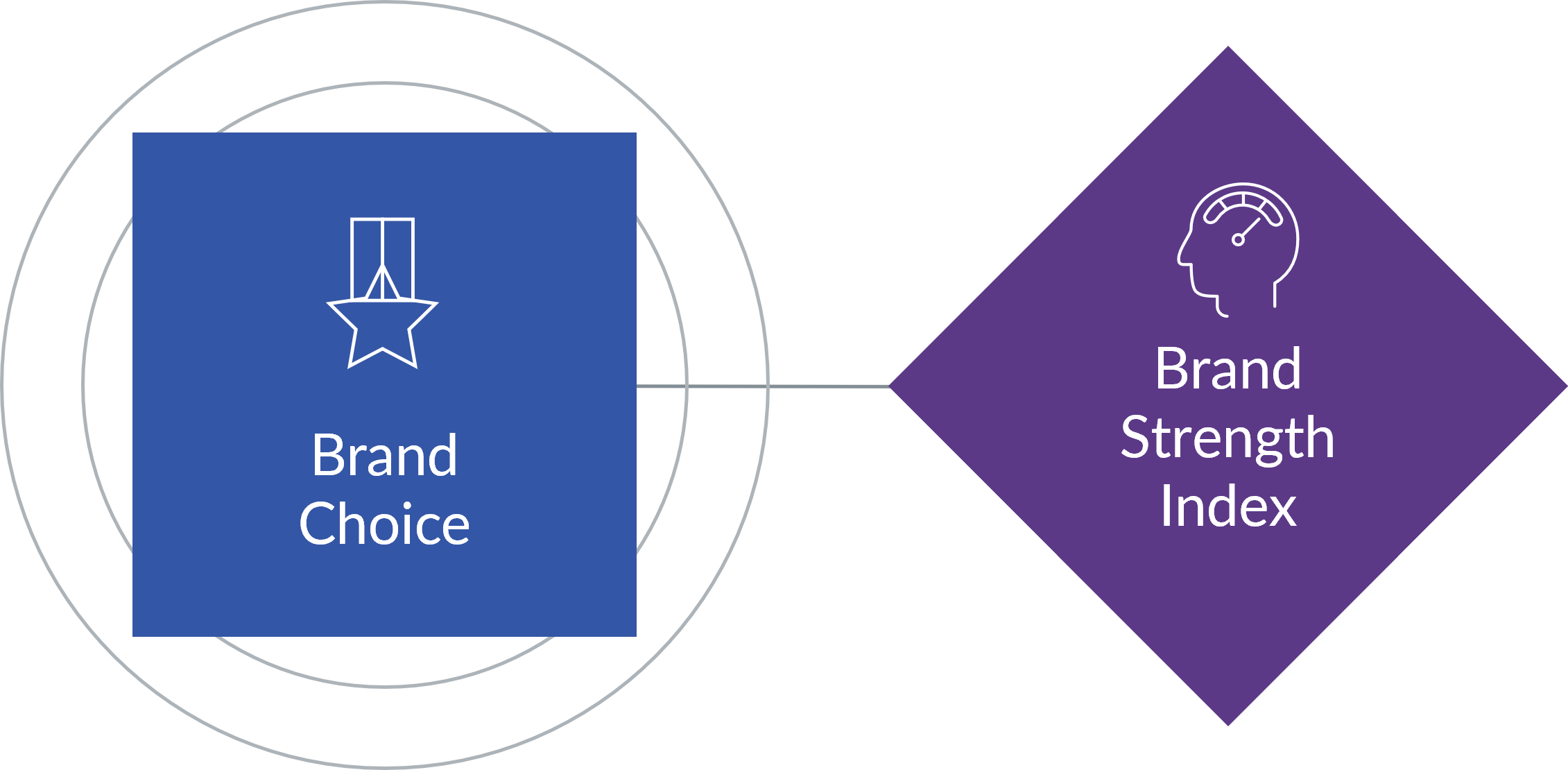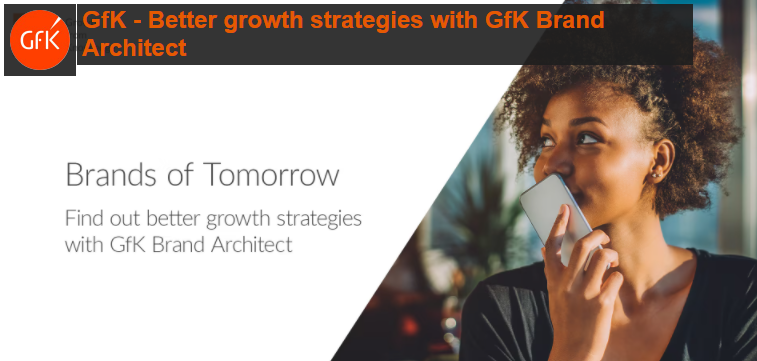What it means to be a Mainstream Brand
Mainstream Brands are well-known, popular brands with widespread, often global appeal. As a result, the consumer profile tends to be complex and fragmented, spanning multiple demographic, psychographic and behavioral segmentation criteria. Mainstream Brands include the likes of Nivea skincare products in Germany, Huawei smart phones in the UK and Renault cars in France.
Around 20% of brands worldwide can be considered to be mainstream. Together, they account for 30 to 40% of revenues.
The top priority for Mainstream Brands is to maintain their popularity and high sales volumes. A consistent brand image creates trust; whilst target markets are not looking for the best product or service on the market, mainstream consumers still want brands they can rely on to meet their needs at an affordable price. Mainstream Brands therefore need to understand how to convey the messages of functionality, relevance, reliability and value to their target audience. Getting the balance right is key.
Read on to discover the strategies that Mainstream Brands need to adopt for success.
For more insights to help define your path to growth and find the right ways to build brand strength, watch our on demand webinar.

A Mainstream Brand's winning strategy
Mainstream Brands operate in a highly competitive marketplace. Taking the right approach to their Brand Premium and Brand Choice strategies will help them maintain or improve their overall Brand Strength. The tips below could help Mainstream Brands enhance their appeal and drive sales. It should be remembered, however, that each market and each category operate differently.
-

As noted, a distinctive brand image isn’t top of the list for Mainstream Brands wishing to remain in this segment. Despite this, brands need to create a strategy that helps them deliver on the key requirements that consumers are looking for. Considerations include:
1. For Mainstream Brands looking to drive a premium, mass communications remain important; brands should still keep their focus on reaching a wider audience as they build their premium.
2. For those looking to move into the Premium Brands segment, delivering superior product quality and image is key. These brands should consider developing new products and features to attract premium buyers. Products featuring innovative designs will ‘stand out on the shelf’ (both online and in-store), giving consumers a reason to pay a premium.
3. Celebrity endorsements, especially on social media and TV, are a powerful way to build up a premium image. Working with the right influencers can help alter consumer perceptions so they ‘believe in’ the change from mainstream to premium.
-

Maintaining their popularity over other brands and driving up revenues are critical to the success of Mainstream Brands. To do this, they should consider the below:
1. Whilst mainstream consumers are motivated by price points, they are also looking for quality. This is why ‘cheaper’ supermarkets like Aldi and Lidl are so successful; product quality and value are inextricably linked despite the lack of frills.
2. Mass marketing is key, as Mainstream Brands need to reach a wide, yet fragmented audience. The key to building successful Brand Attachment is to use modern marketing tools to choose the right platforms and media, and adapt key messages to attract both lighter and heavier brand users. This also includes being highly visible in-store, as this helps create and maintain familiarity and trust, alongside media campaigns.
3. Meet the consumer’s core needs. The UK home improvement brand, Ronseal, summarized this perfectly with its slogan ‘Does exactly what it says on the tin.’ Mainstream customers do not want frills or add-ons, just exactly what they pay for.
4. Build Brand Attachment. Not for image-related purposes, but simply to make sure the brand stays in the public eye. Constant, consistent communications with the target audience will forge strong connections that inspire longstanding loyalty.
5. Trust and reliability are also important. Mainstream consumers do not want cheap products or services that let them down. They want a consistent experience that represents genuine value for money, even if their chosen brand is not the market leader.
Insights from GfK Brand Architect
These rich brand insights come from GfK's brand framework, GfK Brand Architect. It takes a radically new approach to brand measurement by combining data with leading-edge analytics to measure the seven keys to brand strength and how they influence consumers decisions.
Learn more about the changes in the marketing landscape and explore what brands need to know to maximize their potential. Watch a webinar about how you can improve your brand intelligence and contribute to your business success
Topics to be covered include:
- The role brands play in driving value for their businesses
- Defining the four key brand segments and how brands can navigate these
- What drives brand strength, and how the drivers for Brand Choice differ from those for Brand Premium
- How GfK can provide personalized guidance to help brands achieve the best results
Each brand category is unique
Not all brands are power brands - some focus on luxury segments, others focus on the mainstream market, and still others focus on a very niche audience. Each of these segments has a different strategy to reach its audience. Curious to discover more about each of these segments? Read more below:
Exclusive Brands
These brands have high appeal to a niche audience and are known for quality, design, innovation, and experience.
Power Brands
These brands are strong performers that are able to balance a brand premium, while still maintaining broad market appeal.
Smaller Brands
These brands are looking to have a smaller sales volume and lower margins - either just starting up or in decline.



